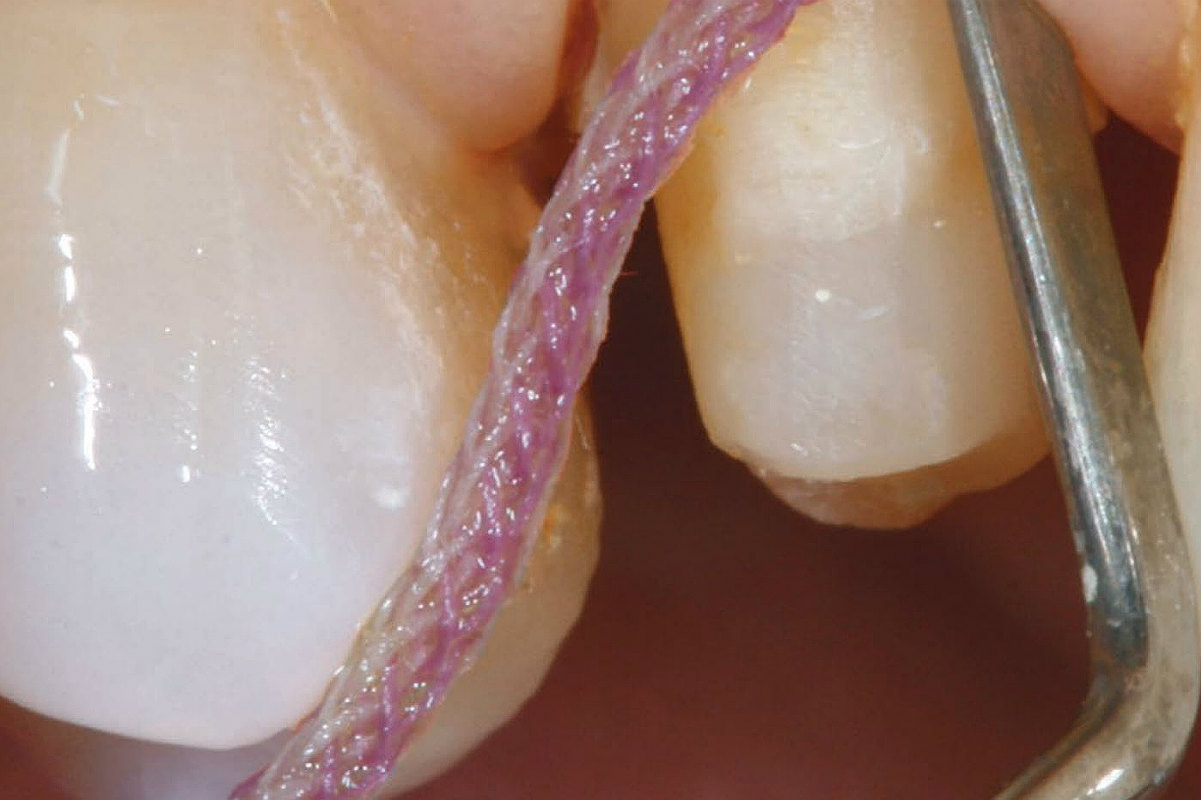
In precision impression-taking of fixed prostheses on natural teeth, the accuracy of the yield of the preparation end margin is vital. The most commonly used techniques involve the utilisation of elastomers.
Low viscosity products are usually preferred in the marginal area; nevertheless, the soft tissue still tends to constitute an impairment for sliding: for this reason, before beginning the process, the operator carries out temporary gingival displacement manoeuvres.
The most common procedure for the displacement of soft tissues surrounding the abutment is based on the positioning of a cord (or more often two cords) which is commonly pre-impregnated with liquids to facilitate the process and maintain haemostasis.
The different types of astringent liquids
Astringent liquids are doubtless the most widely used impregnating liquids in the dental industry, which is why our article focuses on these in particular. There are also impregnating liquids that contain vasoconstrictor molecules such as sympathomimetic amines and adrenaline, which could however cause local and systemic problems.
Astringent liquids are essentially split up into three different types, each with properties and possible critical aspects which you should be aware of for correct use.
1. Aluminium sulphate
Effective and biocompatible, its main flaw is that it can delay or block the additive reaction of certain impression materials, so a compatibility check between the two products is always advisable.
This category also includes potassium alum, a substance that is slightly less powerful than adrenaline but which tissues tolerate much more: it can even be left in the groove for 20 minutes without any adverse effects.
Overall, the advantages of these products are their haemostatic capacity, the potential reduced inflammation and the good retaining of the tissue displacement after the cord has been removed.
2. Aluminium chloride
Implemented in concentrations that vary between 5 and 20-25%.
The advantages are essentially similar to those of aluminium sulphate. The drawback is the interference with the setting reaction of polyvinyl siloxanes and polyethers, an issue which can be remedied considerably though irrigation of the site after the cord has been removed.
Some authors suggest as an alternative not to impregnate the second cord in the double-cord technique.
3. Ferric sulphate
Available in solutions with a concentration between 13 and 15-20%, with quite a high degree of acidity, to such an extent that it may lead to temporary discolouration of the soft tissues.
For this reason, and also to guarantee the normal polymerization process of the elastomers, it is recommended that the cord be kept in situ for approximately 1-3 minutes, and then carefully remove all traces of the liquid before impression taking.
Do you want more information on Zhermack Dental products and solutions?
Contact us
 Zhermack SpA has been one of the most important producers and international distributors of alginates, gypsums and silicone compounds for the dental sector for over 40 years. It has also developed solutions for the industrial and wellbeing sectors.
Zhermack SpA - Via Bovazecchino, 100 - 45021 Badia Polesine (RO), Italy.
Zhermack SpA has been one of the most important producers and international distributors of alginates, gypsums and silicone compounds for the dental sector for over 40 years. It has also developed solutions for the industrial and wellbeing sectors.
Zhermack SpA - Via Bovazecchino, 100 - 45021 Badia Polesine (RO), Italy.


